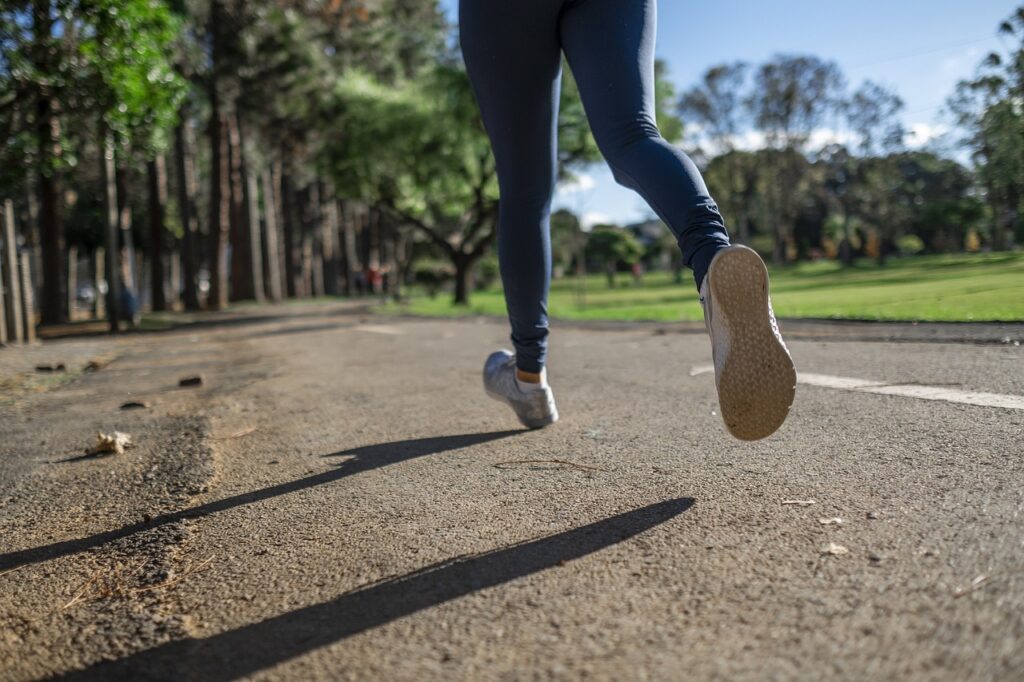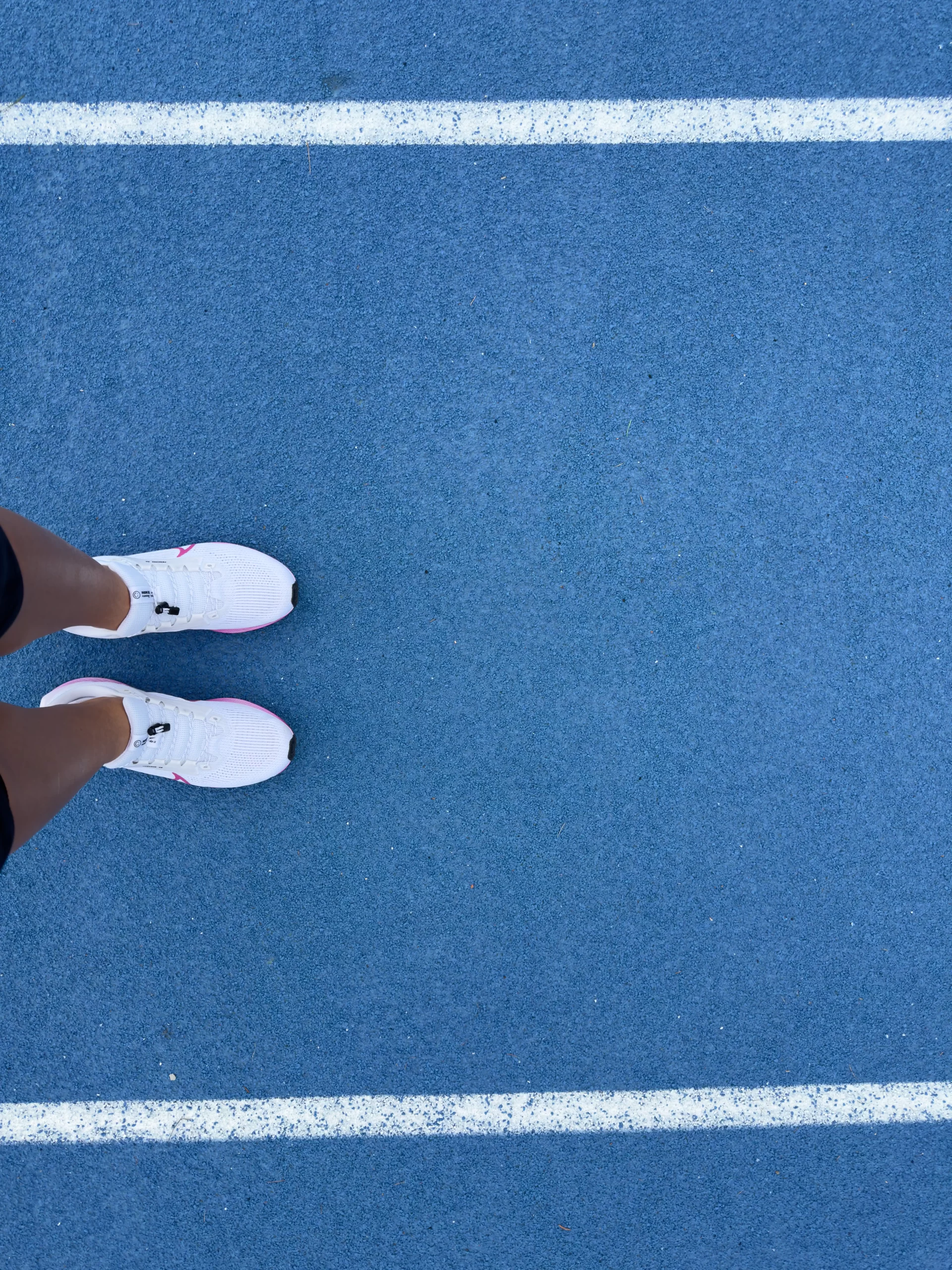When you first start running, you’ll quickly find yourself exploring the various choices available in running shoes. As we mentioned in our guide on how to choose running shoes, one factor you should consider is whether to opt for cushioned or flat shoes. With countless ads and endless options, it’s easy to feel overwhelmed. Let’s break down what these terms mean and what might work best for you as a beginner runner.
Understanding Cushioned Shoes
Cushioned shoes are designed with extra padding, typically in the midsole, to absorb the impact of each footstrike. The idea is to reduce the shock that travels through your feet, legs, and body when you run. These shoes often feel soft and comfortable, like you’re running on a cloud, which is why many people are drawn to them. You might have detected that the largest the cushion the higher the price.
Pros:
- Comfort: The added cushioning can make running feel more comfortable, especially if you’re not used to the repetitive impact of running.
- Protection: They provide extra support for joints and may help reduce the risk of injuries, particularly for runners who are heavier or have issues like plantar fasciitis.
- Versatility: Cushioned shoes are versatile and can be used for various terrains, including road and trail running.
Cons:
- Less Ground Feel:The cushioning can sometimes diminish the sensation of the ground beneath your feet, which might make it harder to develop a natural running form. So, if you are starting to run now, maybe you should avoid them till you learn the proper form.
- Heavier Weight: More cushioning often means a heavier shoe, which could slow you down, particularly as you build up your stamina.
- Potential for Over-Reliance: Over time, you might become reliant on the cushioning, potentially weakening your feet and ankles as they don’t have to work as hard.

Understanding Flat Shoes
Flat shoes, often referred to as minimalist shoes, have minimal cushioning and a low heel-to-toe drop (the difference in height between the heel and the toe). These shoes are designed to promote a more natural running form, encouraging your feet and legs to absorb shock naturally. Flat shoes have become popular from the book Born to Run that promotes barefoot running.
Pros:
- Improved Form: Flat shoes encourage a midfoot or forefoot strike, which can reduce the impact on your knees and hips.
- Stronger Muscles: Because there’s less support, your feet and lower legs work harder, which can lead to stronger muscles over time.
- Lightweight: With less material, flat shoes are often lighter, which might help you feel faster and more agile.
Cons:
- Less Cushioning: Without the extra padding, the impact from running is transferred directly to your feet and legs, which can be tough on beginners, especially if you’re running on hard surfaces.
- Adaptation Time: It takes time for your body to adapt to flat shoes, and transitioning too quickly can lead to injuries like stress fractures or Achilles tendonitis.
- Not for Everyone: If you have specific foot or leg issues, flat shoes might not provide the support you need.
What’s Best for Beginners: Cushioned or Flat Shoes?
There isn’t a one-size-fits-all answer, but here are some factors to consider:
- Your Foot Type: If you have flat feet or overpronate (your feet roll inward when you run), you might benefit more from cushioned shoes that offer stability. On the other hand, if you have a neutral foot type and good strength in your lower legs, you might enjoy the natural feel of flat shoes.
- Running Goals: Are you running for general fitness, or do you have specific goals like running a marathon? If you’re just starting out, flat shoes might not be the most comfortable, but they can help you learn the correct form, as any discomfort will prompt you to rethink your technique and the support you need to ease into running. As you gain experience and your form improves, you might want to experiment with cushioned shoes, especially as you increase your mileage and intensity.
- Terrain: Where you plan to run matters. Hard surfaces like concrete can be harsh on your joints, so cushioned shoes might be more comfortable. If you’re running on softer terrain like trails, flat shoes could be a great way to strengthen your feet and improve your balance.
- Injury History: If you have a history of injuries, especially in your feet, ankles, or knees, cushioned shoes might provide the protection you need. However, if you’ve been injury-free and want to focus on improving your running form, flat shoes might be worth trying.
Finding Your Perfect Fit
As a beginner, comfort and injury prevention should be your top priorities. Many new runners find that starting with cushioned shoes helps them ease into the sport without overwhelming their bodies. However, it’s also important to listen to your body and consider transitioning to flatter shoes if you feel that your running form needs improving.
Remember, the best shoe for you is the one that feels comfortable, supports your running goals, and helps you enjoy the journey. Don’t be swayed by ads or trends—focus on finding what works for you. And if possible, try on several different pairs, take them for a test run, and consult with a knowledgeable running store specialist to get personalized advice. Also, there is no harm in alternating both flat and cushioned shoes between your workouts since it is proven to help with injury prevention.
Happy running!
